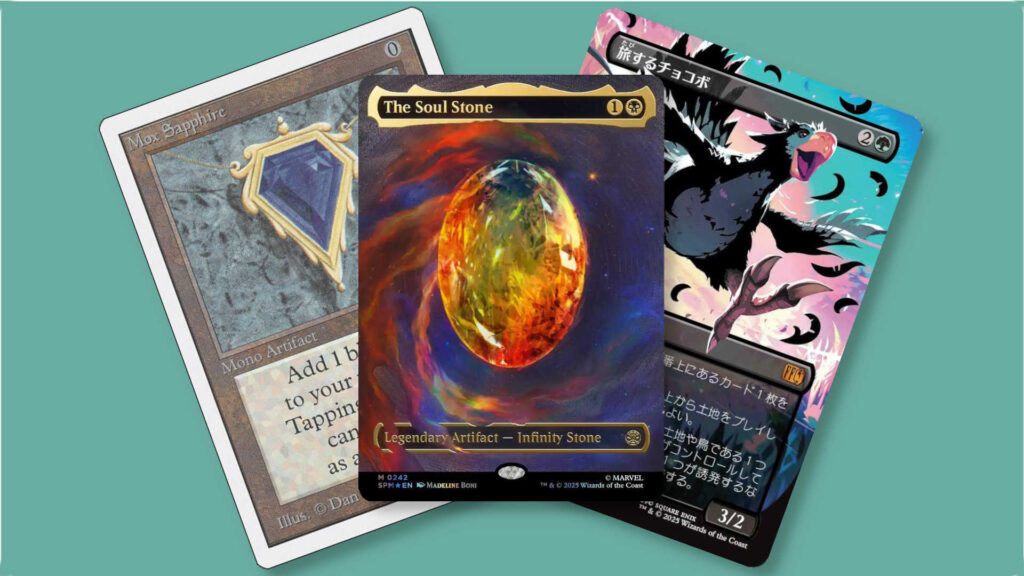Though the series began in 1987 with the original Street Fighter arcade game, it wasn’t until 1991’s Street Fighter II arrived that the series kicked into gear and – this is genuinely not hyperbole – changed gaming forever. Capcom’s fighting game sequel presented players with eight wildly diverse characters; that diversity not just coming from their looks, but in terms of the stunning variety of their special moves, different speeds, and even the way their weight felt during play. The characters in the game, followed by many, many more in revisions of Street Fighter II and numerous sequels (we’re currently up to Street Fighter 6, in terms of the video games, though there have been many more than six titles in the series overall), have become truly iconic and familiar to generations of gamers.
Beginning with the second game, the Street Fighter series has set a benchmark for fighting games that led to the rise of a massive secondary industry in competitive gaming, specialist arcade sticks for home use, and much, much more besides. So how does it fare on the tabletop as a deck-building game? Let’s find out!
Table of Contents
ToggleWhen Was Street Fighter: The Deck-Building Game Released?
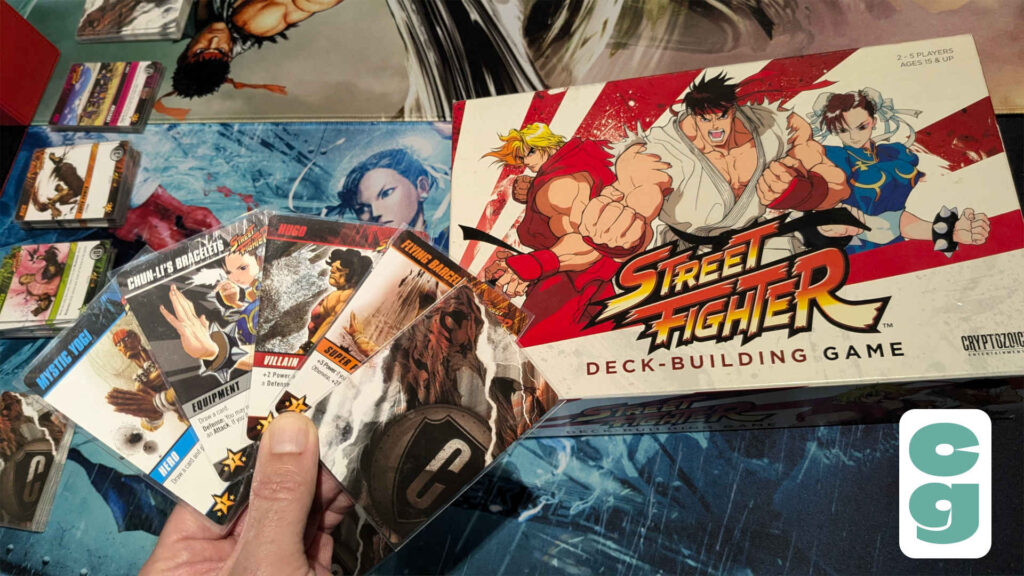
Cryptozoic Entertainment released Street Fighter: The Deck-Building Game in 2014 as part of their Cerberus Engine line of deck-building titles. These games are cross-compatible with each other, for the most part, and as such the Street Fighter game’s card backs feature the same design as all other Cerberus Engine titles, which include games based on DC Comics characters and storylines, Tolkien’s Lord of the Rings universe, Attack On Titan, Rick and Morty and, perhaps a little bizarrely, an NHL deck-building game using the same engine too.
What is the Cerberus Engine?
The Cerberus Engine is the basic rule set for all of the games that are built using it; though the basic gameplay is the same across all of the different titles, there may be some differences depending on the subject matter, as it’s slightly adapted to take advantage of special elements that each franchise may bring to the table.

For example, in Street Fighter, there are location cards known as Stages, which will be very familiar to players of the Street Fighter II game (excitingly, for maximum nostalgia and appeal to fans of Street Fighter II, they look exactly like each stage in the original arcade game), at which you defeat bosses and then add the location to your deck. Numerous smaller differences, such as the focus on attacking and counter-attacking, or being able to store certain cards underneath your Super Hero, as your own personal stash of cards to buy, also set Street Fighter: The Deck-Building Game apart from other games using the Cerberus Engine.
How to Play Street Fighter: The Deck-Building Game
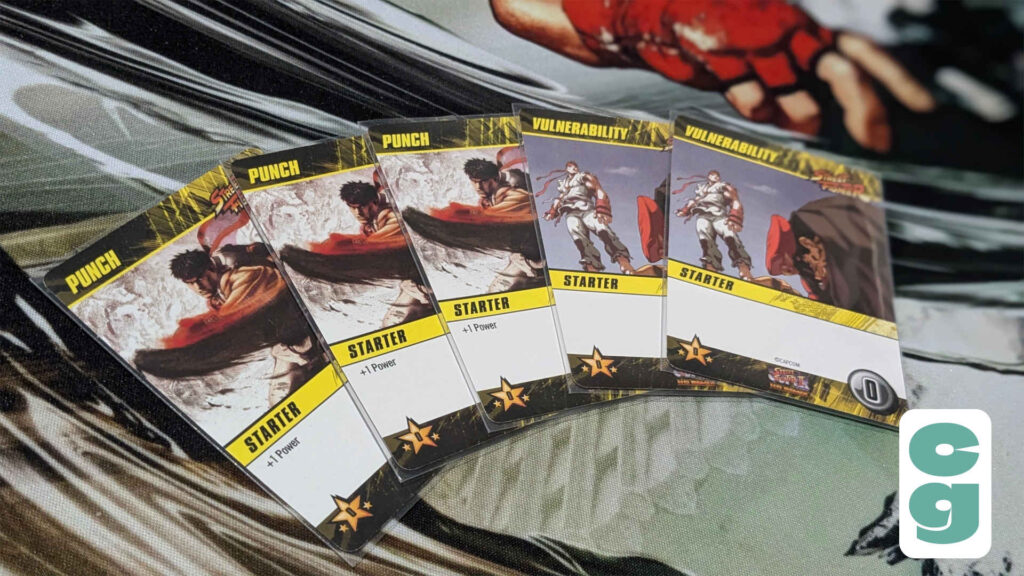
The Cerberus Engine, and all titles released that use it have mechanics that are very familiar to players of other Cerberus games, as well as other deck-building games in general, such as Star Realms, to use perhaps the most famous example. Players begin the game with a deck of basic cards; in Street Fighter, it’s seven Punch cards (each of which provide one Power, the game’s currency) and three Vulnerability cards (which do nothing at all).
The cost of cards is in the bottom right of each card, victory points in the bottom left, and any card abilities in the text box beneath each card’s illustration, along with the color-coding of the card’s type.
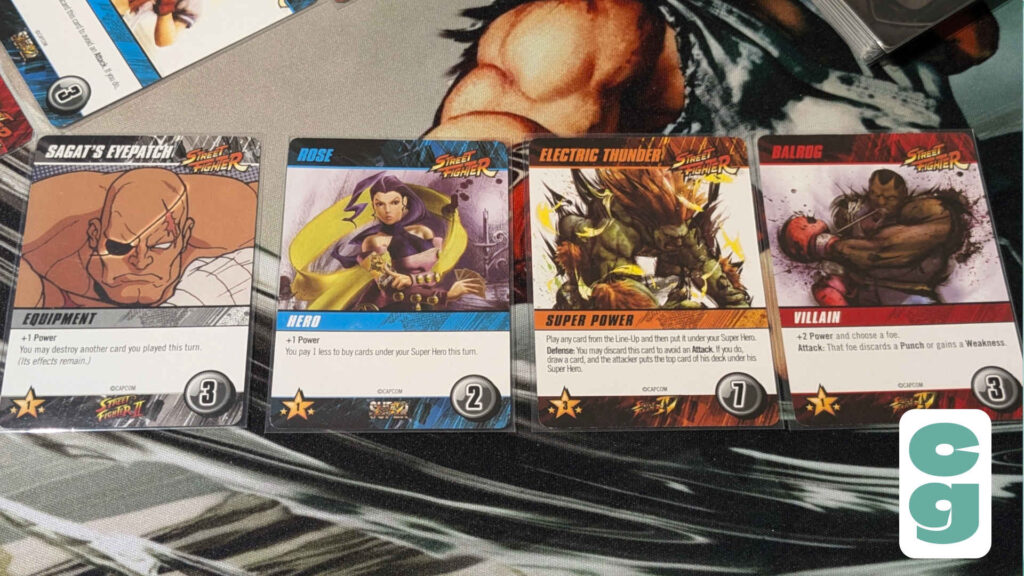
There’s a central, face up row of cards, which has cards that can be purchased during a player’s turn; cards purchased go to a player’s discard pile, and when the deck runs out, all of a player’s discard pile is reshuffled to create the new, and presumably more powerful, deck to draw from. There’s always a basic, cheap card available to buy if players can’t afford, or don’t want, any cards from the central row; in Street Fighter, that’s Kick cards, which give the player two Power when played, and a victory point at the end of the game.
Some cards can Attack, many cards can also double as Defense, and each player has a unique character who starts with their own, personal Ultra move that begins play underneath their Super Hero. This can be purchased any time, as long as they can afford it, with the Power cards they’ve played on a turn; each Ultra costs six Power to buy. It can be used as a powerful Counter-Attack, as well as a Defense too.
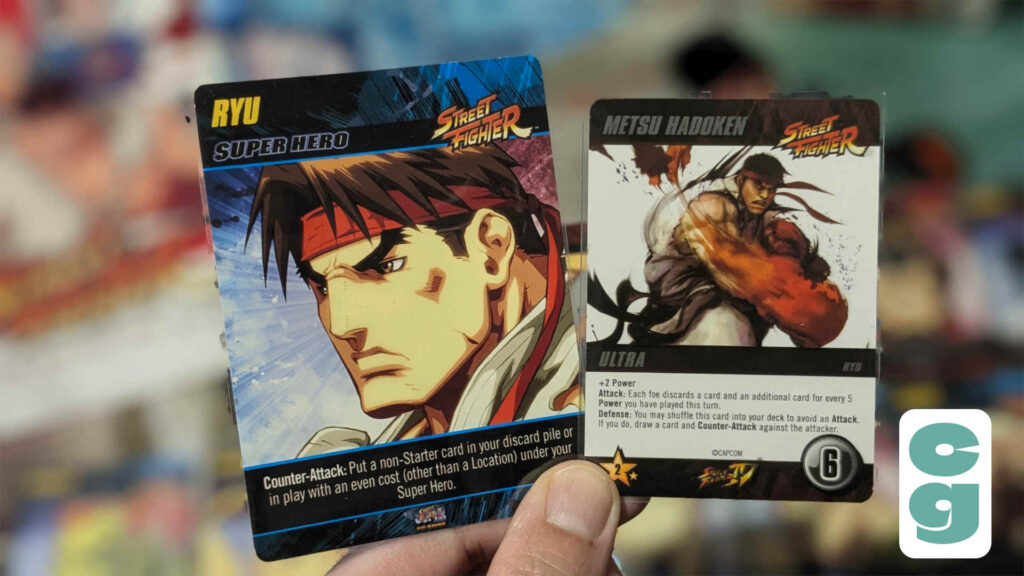
The aforementioned Stage deck will always have its top card revealed, and only the top one is available to purchase at a time. When bought, with the cost being just like any other card, players must then deal with the effects of a Stage Boss, which is revealed only when the Stage card is being purchased. The Stage is then added to a player’s discard pile like any other card, and when played, it’s added to its owner’s play area permanently (unless removed by another card’s effect) as a powerful location which bestows an extra ability each turn.
Once all Stages have been taken, it triggers the game’s end, and players must count up all of the victory points on cards in their deck, discard pile and in play (not counting cards under their Super Hero which they haven’t purchased).
Weakness cards can be added to player’s decks through various attacks and other card effects, and these can be removed simply by playing them. However, if they are still in a player’s deck at the end of the game, they’re worth -1 victory point each! After all totals are calculated, the winner is the player with the most victory points.
Is Street Fighter: The Deck-Building Game Fun to Play?
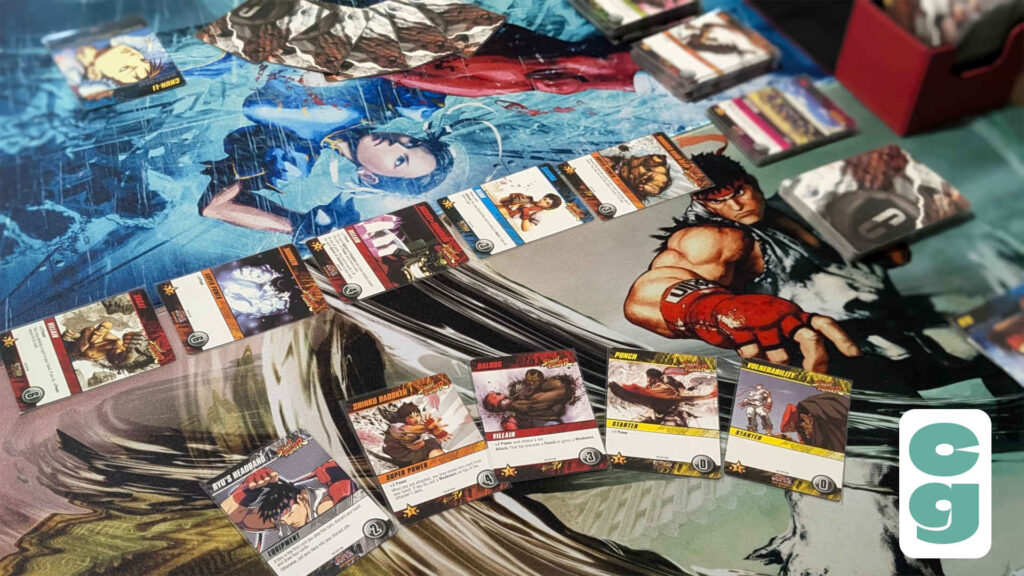
I’m a huge fan of deck-building games in general; not only are they easy to learn, but the general, often shared mechanics of titles in the genre are hugely compelling, and it’s always really satisfying to gradually put together a powerful deck over the course of a game.
Street Fighter is no different in this regard, and the addition of mechanics that feel deeply thematic to the arcade game makes it especially appealing to video game fans, and fans of the Street Fighter series in general. The special moves, characters and even little quirks such as Dan Hibiki (poor Dan!) being the character on the Weakness cards, mean that this is an absolute treat for long-term fans of the Street Fighter games.
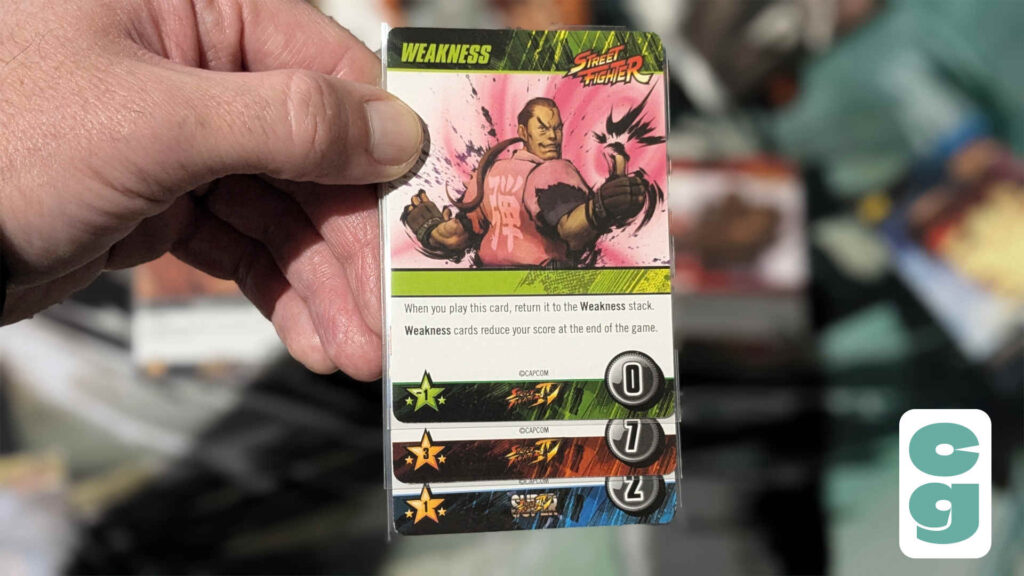
It’s a little slow to start, and it can run a little long in comparison to other deck-building games, thanks to the cost on the last few cards in the Stage deck (of which there are only eight, but it can still take a few lucky draws to have enough Power to nab them!), so it may not be the best deck-building game for non-fans, or even for more casual fans of the Street Fighter series. The rules suffer from some glaring blunders in the layout too (for example, nowhere does it state how many cards you should have in your opening hand, though later in the book it does say that you draw a hand of five cards at the end of your turn).
However, it really does cater so well to aficionados of the Street Fighter video games (if you’re wondering just how big of a fan I am of Street Fighter personally, check out the custom playmats in the images throughout this article; that should make it very clear indeed!). Each character, for example, has a little logo on the bottom of their card to show which game in the series their incarnation hails from, and the artwork throughout is absolutely gorgeous.
The Art of Street-Fighter: The Deck-Building Game
On that note, the developer and publisher of the Street Fighter games, Capcom, have always ensured that their video games demonstrate the highest production values. The appeal of the Street Fighter games extends not just to the deep gameplay and (often campy, but fun) lore behind them, but also to their amazing visuals too, which are always cutting edge. Even the older, 2D titles in the series – perhaps the first Street Fighter aside – have aged beautifully, thanks to gorgeous pixel art that remains timelessly beautiful; even during a time when 3D visuals and fighting games were all the rage, except for a few notable exceptions, Capcom stuck with evolving and refining their 2D art style and it has been shown to be the right choice as time has gone by.
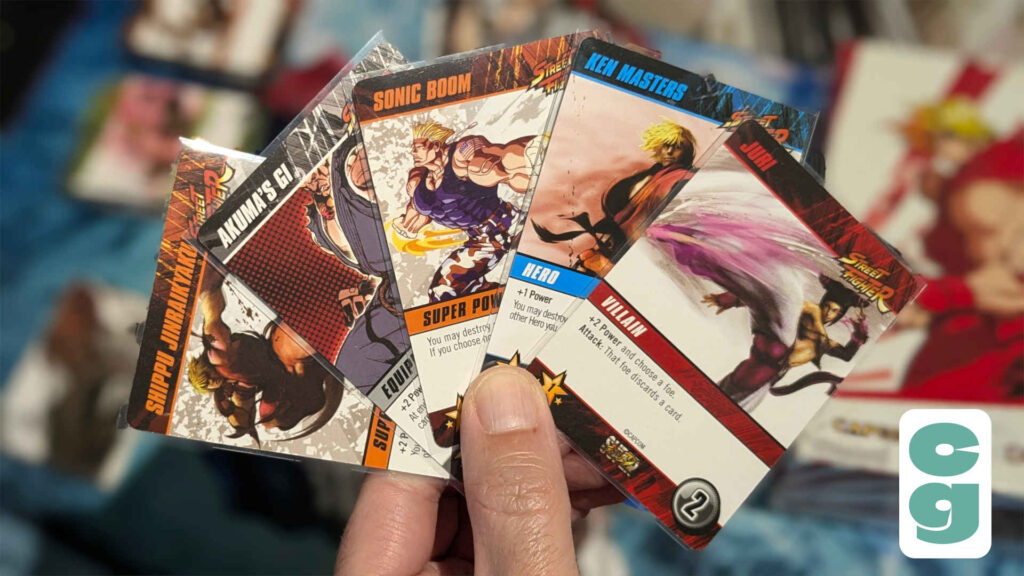
That carries over to the game too; similarly stunning artwork, vivid character design, and dynamic action is present in every facet of Street Fighter: The Deck-Building Game, with the bolder, comic book-style aesthetic of older titles and slightly muted, but more painterly and detailed art of more recent games both being present and complementing each other well. It’s a gorgeous game, and even its striking box art is instantly appealing. Everything, from a visual standpoint, feels as if its been pulled directly from the various games in the Street Fighter series, and it really does feel like a heartfelt love letter to the fans.
What Happened to Street Fighter: The Deck-Building Game?
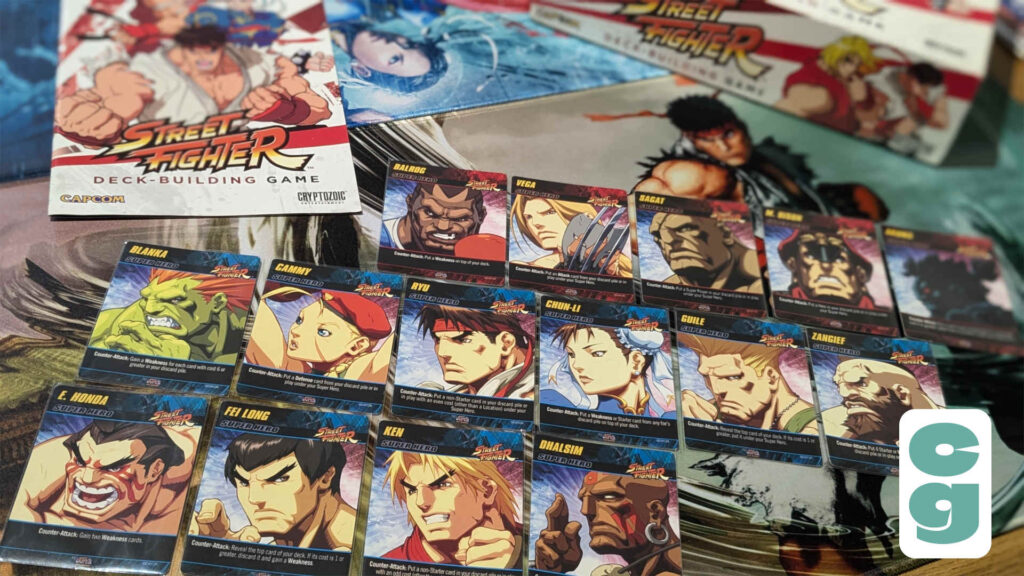
Long out of print, Street Fighter: The Deck-Building Game, despite a warm critical reception and many players declaring it, upon arrival, as their favorite Cerberus Engine title, wasn’t blessed with a single expansion after release. The reasons for this aren’t known, but it’s particularly galling that this is the case, as the game is so strong and the deck-building genre is a perfect fit for the theme; Capcom’s other fighting series, DarkStalkers, would have made for an excellent expansion, for example (it seems that other players agreed, as a fan made, mini-expansion featuring the DarkStalkers characters can be found on BoardGameGeek!).
It’s a real shame that the game doesn’t seem to be returning in any form, and as such it can be quite costly to acquire even a pre-owned copy from the likes of eBay; however, it’s well worth tracking down for fans of Street Fighter and deck-building games in general. If you have other Cerberus Engine games in your collection, it’s a really worthy addition too, though note that you have to choose whether to use this game’s Boss system or the Super-Villain mechanic in the game(s) you combine it with, and of course just about all other games in the range already have a variety of expansions anyway.
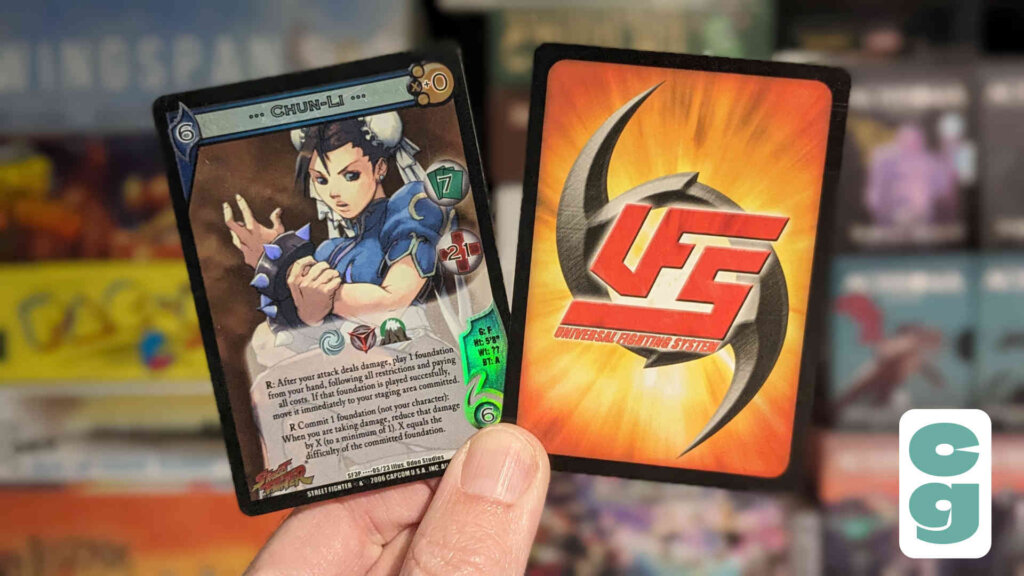
Numerous other Street Fighter tabletop games have come and gone over the years, with this being, in my humble opinion, the very best of the bunch. There’s good news on the horizon for Street Fighter fans; though Street Fighter: The Deck-Building Game isn’t returning (though I suppose we should never say never), UVS Games has announced that the series is coming back to the long-running UniVersus Trading Card Game, where it’s previously made its mark. Numerous sets for UniVersus, previously known as the Universal Fighting System (or UFS), based on the Street Fighter franchise have previously been released (you can see an example of an old UFS Chun-Li card above). Street Fighter 6 Challenger Series decks will be released in July, 2025, following a long absence from the Trading Card Game. The last Street Fighter series for UniVersus was released way back in 2006, so its return is long overdue.





